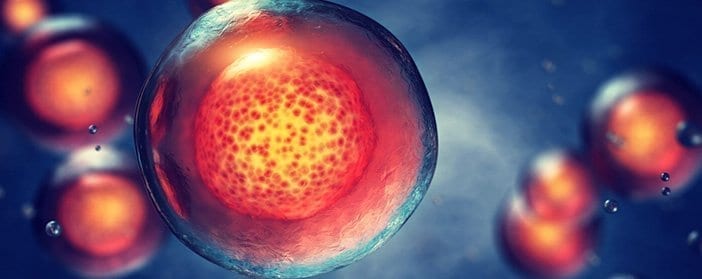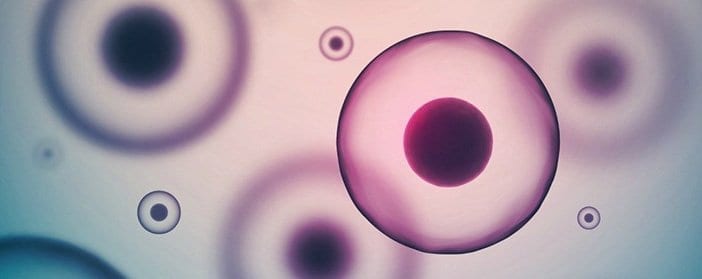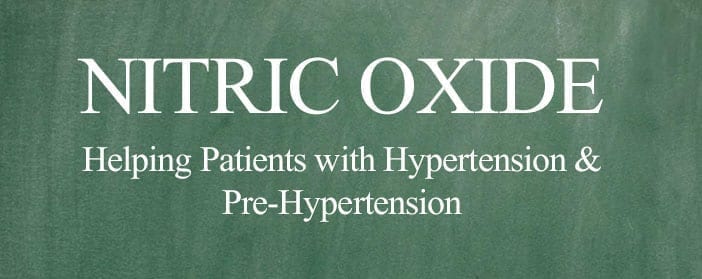
by admin | Nov 7, 2017 | Studies, Lupus
A recent study published in Clinical and Experimental Medicine provides new evidence that mesenchymal stem cell transplantation may be a safe treatment option for patients who suffer from systemic lupus erythematosus and who do not respond to conventional treatments like immunosuppressive drugs and steroids. Previous studies that have examined the efficacy and safety of mesenchymal stem cell therapy for lupus patients have suggested that the procedure is safe. In those studies, few if any adverse side effects have been observed.
Given the promise of mesenchymal stem cells for treating systemic lupus erythematosus, the scientists conducting the current study wanted to more comprehensively evaluate the technique’s safety. They studied 9 patients with systemic lupus erythematosus who were not responding to immunosuppressive drugs or steroids. The patients underwent umbilical cord mesenchymal stem cell transplantation and were evaluated immediately following the procedure and again 6 years earlier.
To evaluate safety, the researchers performed tests of the blood, urine, and liver. They also checked the heart with electrocardiograms, did chest radiography, looked at white blood cell and platelet counts, and checked for markers of cancer. None of the tests the researchers performed demonstrated adverse side effects of the umbilical cord mesenchymal stem cell transplantation either immediately after or 6 years after the procedure. One patient experienced a warm sensation with dizziness following the transplantation, but no patients experienced headaches, nausea, or vomiting.
These results help to bolster the idea that mesenchymal stem cells may provide a safe therapeutic option for systemic lupus erythematosus patients who do not respond to conventional therapies. Studies that evaluate both longer-term safety of the procedure as well as its efficacy in improving the symptoms and progression of lupus will help scientists and clinicians better understand how stem cell regiments can be used to help lupus patients.
To learn more about stem cell therapy for lupus patients, click here.

by admin | Nov 4, 2017 | Studies, Lupus
A recent study that was undergone to determine how effective – and how safe – a stem cell transplant for lupus patients found that the approach was both effective and safe. The results were published in the Annals of the Rheumatic Diseases.
The researchers specifically targeted patients with systemic lupus erythematosus who did not respond to conventional treatments for lupus. Certain types of stem cells have been used to treat these types of patients before. In this study, researchers used mesenchymal stem cells because these cells have advantageous properties that make them likely to be effective in the treatment of systemic lupus erythematosus, as well as properties that make them likely to be safer than hematopoietic stem cells.
There were 15 patients who underwent mesenchymal stem cell transplantation as part of this study. The researchers followed up with the majority of these patients for over a year following the procedure. When assessing the patients, the researchers tested them on the systemic lupus erythematosus disease activity index (SLEDAI) and for proteinuria, as these tests can be used to evaluate lupus status and kidney function. The researchers found that every patient who had received the stem cell transplantation showed clinical improvement in their lupus.
Once a year had passed since the stem cell transplantation, all but 2 patients continued to experience an improvement in their lupus, while the other 2 patients had a relapse in their proteinuria. The researchers looked at other signs of kidney and non-kidney function and found evidence of improvement from those tests as well. The researchers did not observe any serious adverse side effects from the stem cell transplantation.
These results demonstrate the promise of mesenchymal stem cell transplant for lupus patients who do not respond to conventional treatments. Given that the stem cells appear to be safe for this application and also to improve lupus, further research will likely help clarify the best way that these stem cells may be used to help patients who suffer from lupus.
To learn more about stem cell transplant for lupus patients, click here.

by admin | Nov 1, 2017 | Studies, Stem Cell Research
Recent research has found that stem cells may offer a promising new solution for treating Achilles tendon ruptures. Conventional treatment options for Achilles tendon ruptures have significant limitations. Some treatments work only to combat the symptoms related to Achilles tendon ruptures but do not work to repair the damage. These options are also time-consuming and often ineffective. Surgical interventions, on the other hand, involve high degrees of risk related to complications due to things like infection and nerve damage.
Given the opportunity for stem cells to help repair tissue damage, physicians and researchers have begun to focus on how stem cells may be specifically applied to treat Achilles tendon ruptures. The current study assessed two different types of stem cells in Achilles tendon rupture repair. These cells, called bone marrow mesenchymal stem cells and tendon-derived stem cells, have advantages over other stem cell types in their potential to help with Achilles tendon rupture. For instance, both stem cell types proliferate quickly.
Because tendon-derived stem cells are specific to the tendon, the researchers hypothesized that these cells would be more effective in Achilles tendon rupture repair than bone marrow mesenchymal stem cells. To test their idea, they implanted the two stem cell types into ruptured Achilles tendons and look at the impact of each stem cell type.
The researchers found that both types of stem cells were effective in improving the potential for ruptured Achilles tendons to heal. Consistent with their hypothesis, however, they found that the tendon-derived stem cells were more effective than were the bone marrow mesenchymal stem cells. Further research will likely help the medical community understand how best to use stem cells to address issues like ruptured Achilles tendons.
To learn more about the benefits of stem cell therapy, click here.

by admin | Aug 7, 2017 | Studies
A recent review in the World Journal of Stem Cells has described the nature of umbilical cord-derived mesenchymal stem cells and the clinical advantages of using these stem cells over other types of stem cells. Other mesenchymal stem cells that are used in research come from: bone marrow, peripheral blood, cord blood, placenta, adipose tissue, dental pulp, and fetal liver and lungs.
One of the main advantages of umbilical cord stem cells, for both research and clinical purposes, is its ease of collection. The collection is noninvasive, circumventing the issue of causing pain to extract the cells. Further, as umbilical cord is generally viewed as medical waste, the cells can be collected without the same ethical issues that are raised by the collection of other cell types.
The cells are also plentiful when collected and can be banked for later use. According to the researchers, the only disadvantage of umbilical cord stem cells in this context is that a physician must evaluate the baby donor’s health and confirm that the cells derive from a healthy baby. This requirement stems from the fact that the cells are more likely to develop into healthy cells themselves if they come from a healthy baby. However, in the case of bone marrow-derived mesenchymal stem cells, a physician can evaluate the potential donor first and then decide whether to collect the cells.
The immunomodulatory characteristics of umbilical cord-derived mesenchymal stem cells also represent a major practical advantage of these cells for clinical applications. The introduction of any foreign agent to the body poses a risk because the immune system may recognize the matter as foreign and deem it threatening. If this immune response occurs, the immune reaction that ensues can cause severe long-term damage to tissues. Given that umbilical cord-derived mesenchymal stem cells cause these immune reactions much less frequently than do other stem cell types makes them potentially safer as therapeutic interventions.
More research is needed to determine the best ways to use umbilical cord-derived mesenchymal stem cells. However, the evidence that there are clinical benefits to using these cells over other stem cell types is accumulating.
To learn more about the five benefits of stem cell therapy, click here.
Reference
Nagamura-Inoue & He, H. (2014). Umbilical cord-derived mesenchymal stem cells: Their advantages and potential clinical utility. World Journal of Stem Cells, 6(2), 195-202.

by admin | Aug 1, 2017 | Studies
A recent study, published in the Journal of Clinical Oncology, demonstrates that the repeated infusion of mesenchymal stem cells could improve the safety of certain type of stem cell cancer therapies. Specifically, this approach could reduce dangerous graft-versus-host disease (cGVHD) symptoms in patients who have undergone a certain type of stem cell transplantation, known as HLA-haploidentical hematopoietic stem-cell transplantation (HLA-haplo HSCT).
While HLA-haplo HSCT can reduce the risk of relapse in leukemia patients, it is also associated with an immune reaction that is the leading cause of death in the patients that do not relapse. In these cases, the patient’s immune system mistakes the newly transplanted stem cells as dangerous foreign agents and attacks them. This reaction leads to organ damage and death.
Given that HLA-haplo HSCT can be effective against leukemia, researchers have wanted to find a way to increase its safety. This study was undertaken to determine if multiple infusions of mesenchymal stem cells could help the immune system learn to cope with the stem cells and minimize their reaction.
To test their idea, researchers studied 124 patients who had undergone HLA-haplo HSCT. They gave half of those patients multiple infusions of mesenchymal stem cells, and the other half received saline infusions known to have no effect. The researchers found that the patients who were given the mesenchymal stem cell infusions had a lower incidence of cGVHD than the patients who were given saline infusions.
Not only were the symptoms different between the group who received mesenchymal stem cell infusions and those who did not, but so too was the activity of immune cells. The mesenchymal stem cell infusions resulted in more memory B lymphocytes and regulatory T cells, both of which could help mitigate cGVHD symptoms. These infusions were also associated with fewer natural killer cells, which are important cells for immune cell reactions like cGVHD.
While more research is needed to determine exactly how mesenchymal stem cells should be used to prevent cGVHD and to what extent these cells can improve the safety of HLA-haplo HSCT, these results provide hope that leukemia patients will be able to more safely receive effective stem cell treatments in the future.
To learn more about the safety of adipose stem cell procedure, click here.
Reference
Gao et al. (2016). Phase II multicenter, randomized, double-blind controlled study of efficacy and safety of umbilical cord-derived mesenchymal stromal cells in the prophyalxis of chronic graft-versus-host disease after HLA-haploidentical stem cell transplantation. Journal of Clinical Oncology, 34(24), 2843-2853.

by admin | Jul 5, 2017 | Studies
Research has long shown that nitric oxide regulates the cardiovascular system. The molecule naturally occurs within cells and organs of the body but quickly degrades. Physicians and scientists have therefore suggested that supplementing patients with cardiovascular issues with nitric oxide could be beneficial. Recently, studies have shown that this type of nitric oxide supplementation does indeed improve blood pressure and other cardiovascular functions.
Two recent studies specifically employed an orally disintegrating lozenge that supplements the body with nitric oxide through the oral cavity. One of these studies was performed on 30 patients with clinical hypertension, and the other was performed on 30 patients with pre-hypertension. Whereas hypertension refers to chronically high blood pressure, prehypertension is a clinical stage that leads to this condition. Previously, the only treatment options for prehypertension were changes to diet and lifestyle.
The impact of the nitric oxide supplementation was seen with a single dose for hypertensive patients and observed after a 30-day period of supplementation in the pre-hypertensive patients. In both groups, the oral supplements reduced blood pressure. In the hypertensive patients, the lozenges also improved endothelial function and vascular compliance in patients who were not otherwise treated for hypertension. Endothelial function refers to the functioning of the inner lining of the blood vessels, whereas vascular compliance refers to how well the arteries and veins stretch when exposed to pressure. In the pre-hypertensive patients, functional capacity was also improved, as was quality of life. The quality life measure was not assessed in the hypertensive patients but may too have been improved.
Unlike many medical interventions, nitric oxide supplementation has counterparts that naturally occur in the human body. Given that it is already present in the body, it is reasonable to assume that nitric oxide, at least at certain doses, is safe. This new literature that demonstrates the beneficial cardiovascular effects of nitric oxide supplementation suggests that nitric oxide supplements may represent a promising new therapeutic intervention in cardiovascular medicine.
References
- Biswas, O.S., Gonzalez, V.R., & Schwarz, E.R. (2014). Effects of an oral nitric oxide supplement on functional capacity and blood pressure in adults with prehypertension. Journal of Cardiovascular Pharmacology and Therapeutics, 1-7.
- Houston, M, & Hays, L. (2014). Acute effects of an oral nitric oxide supplement on blood pressure, endothelial function, and vascular compliance in hypertensive patients. Journal of Clinical Hypertension, 1-6.







 St. Petersburg, Florida
St. Petersburg, Florida
